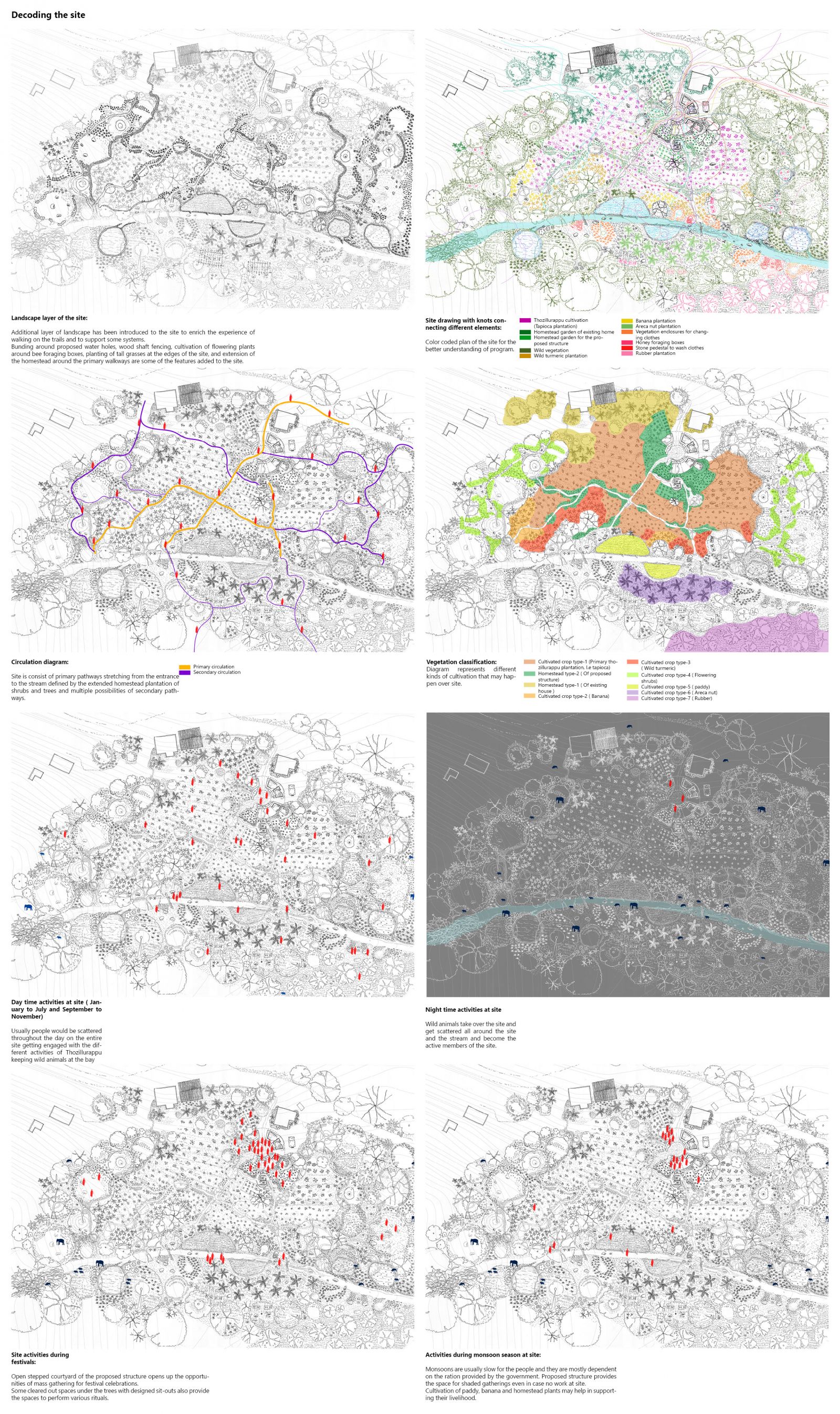- Student SIDDHARTH JAIN
- Code PLA22342
- Faculty Architecture
- Unit L4 Studio Unit
- Tutor/s Divya Shah
- TA Sankalpa Patel
In the ancient forest of Agasthyamalai, dwells a community of forest people called the Kanis. In the older times they used to celebrate the notion of coming together in day to day activities like hunting, fishing, cultivating, procuring forest produce, celebrating, healing, praying, constructing, innovating, moving and temporarily settling at places. The community and its people are no different from the wild plants growing tall or animals with their survival skills in the forest. They are, in many ways, an invincible part of the forest ecosystem and can’t be seen in isolation with the forest. Their gratitude towards the great mountains protecting them and forests serving them and providing them with a space to live is eternal, and that feeling keeps them glued to each other as a community. The streams, trees, Agasthyamalai peak, their traditional practices, celebrations, farming and hunting practices keep them together as a community and tie them all in knots of interdependencies, some fragile, some the strong. These knots are almost impossible to untie. But with the changing times, the forest and the tribe underwent many changes. The major change being prohibition on shifting cultivation due to the introduction of administrative laws. Interference of the external forces like governing bodies inside the forest and blurring the boundaries between the forest and the outside world led to reduced opportunities of community gatherings in day to day manner, but which also gave a rise to new kinds of gathering opportunities. The interventions and systems devised under the project try to respond to these new grounds of gathering. In many ways, these grounds will celebrate the ‘coming together’ in today’s time, they will fulfill the spatial needs of the Kani and enhance their opportunities of engaging with each other and the surrounding landscape. These Interventions bridge the ever increasing gap between the people and the forest. The identified active zones for the intervention are gathering spots for all beings of the forest including the Kani’s.









